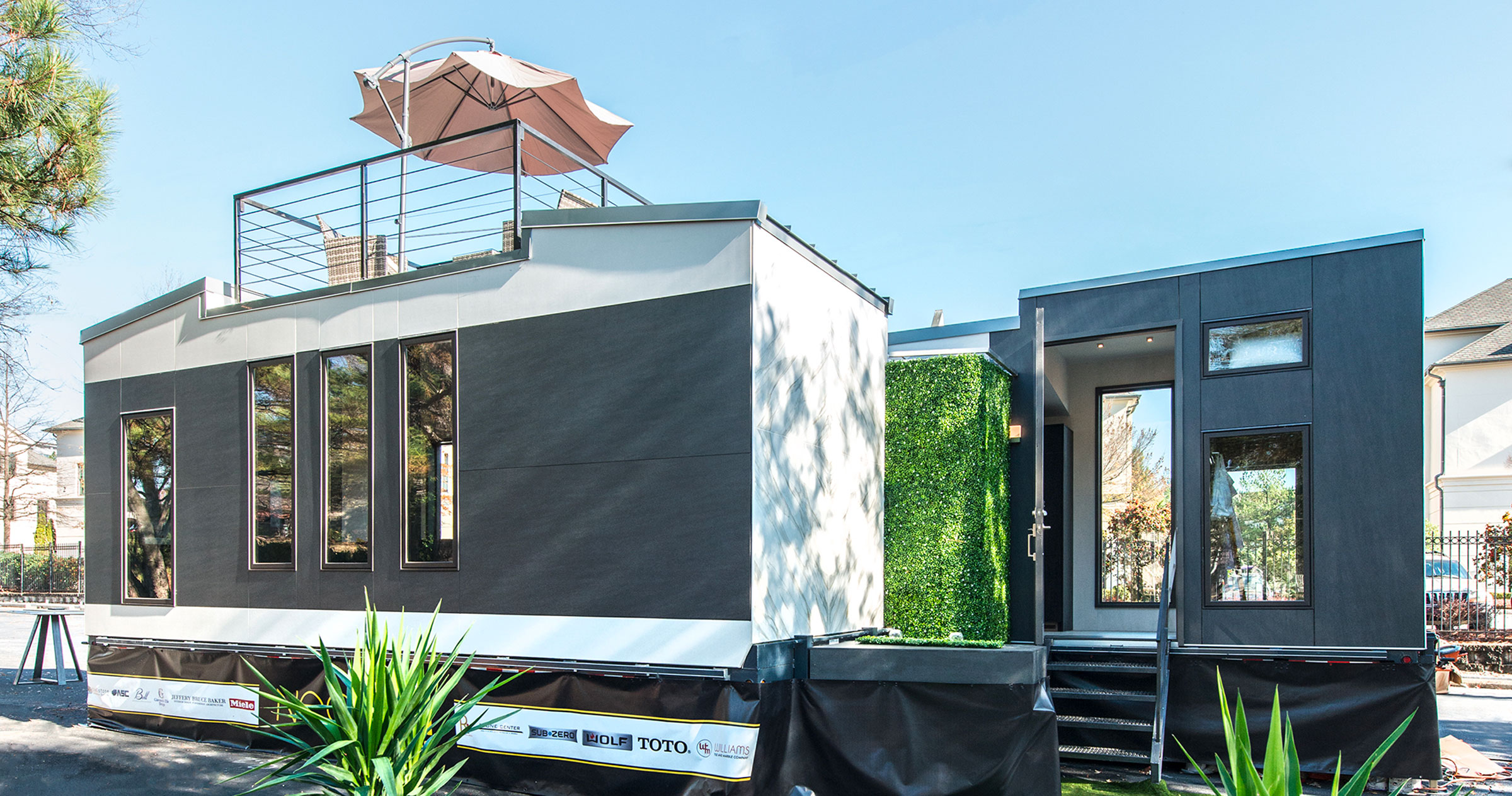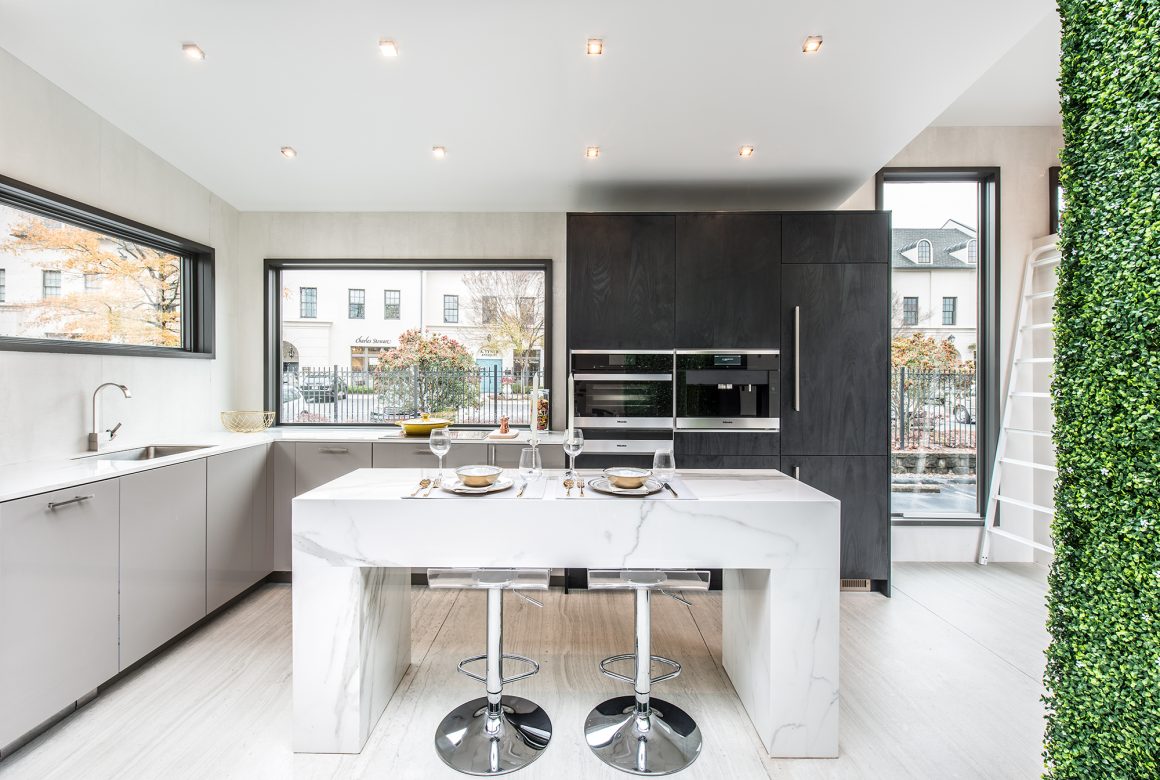
and Estatuario Polished island and countertop are surfaces that create a wow effect in the Tiny House’s kitchen.
The Tiny House movement may be all about small-space living, but it’s certainly making a big impact. An increasing number of people worldwide are turning to tiny dwellings to save space and live responsibly, without sacrificing the amenities and functions of a regular-sized abode.
Neolith’s Tiny House project, an experiential home on wheels, uses the brand’s material on wall cladding, flooring and countertops.
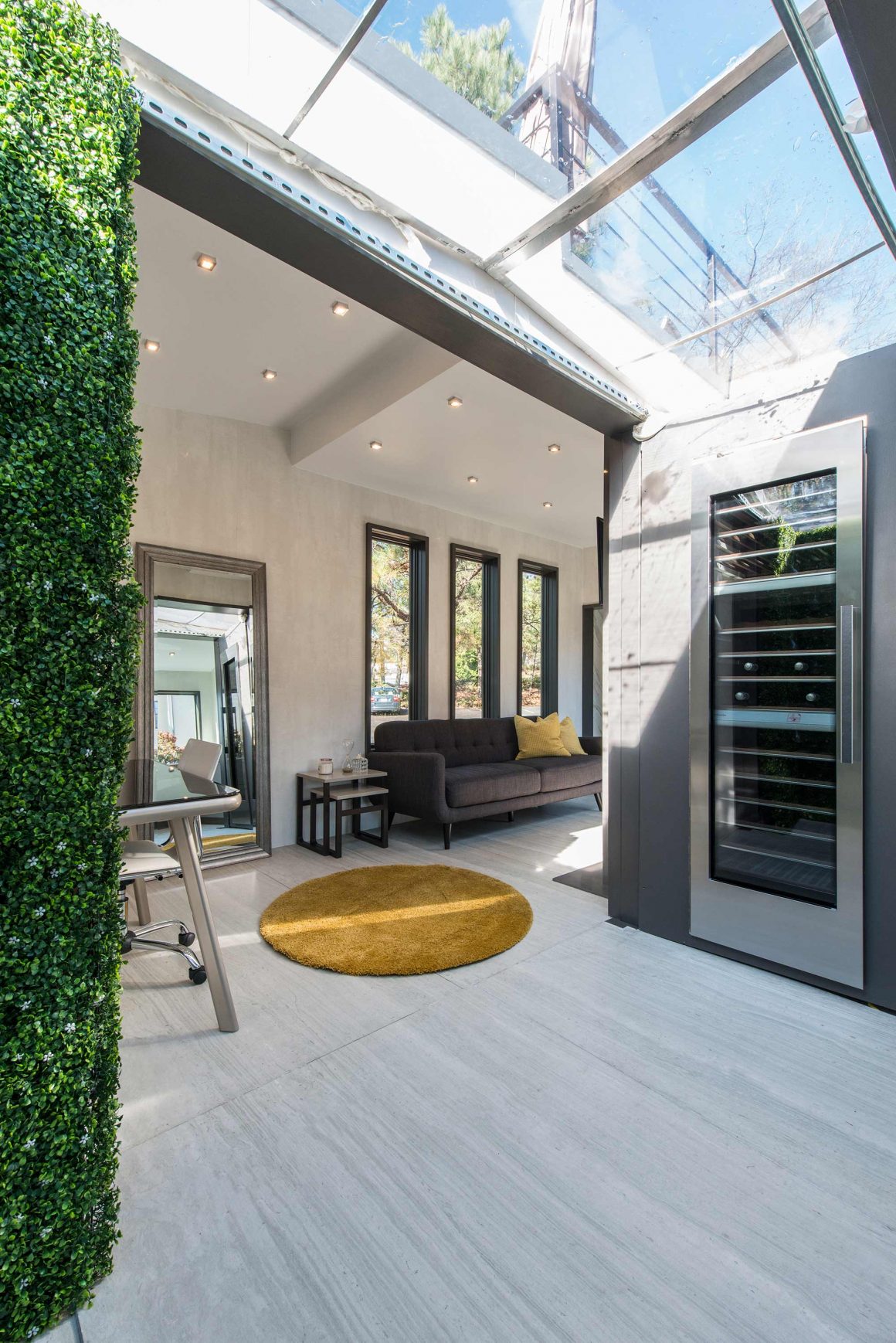
Neolith is a lightweight, large-format sintered surface made of such recyclable materials as granite and glass minerals. It’s created using intense heat and pressure to bond the elements, resulting in a strong but lightweight material that is UV-resistant and can be used to clad various surfaces.
The Tiny Home has everything needed in a home, including a bedroom, two bathrooms, living area with fireplace, full-size kitchen with luxury appliances, and a roof deck. There is also a sunroom, making the space a bright and airy example of a tiny property.

LIGHT AND LONG-LASTING
Because Neolith material is lightweight, it can be used in all areas of a small home without weighing down the internal structure. Its durability ensures it does not require constant upkeep. Those who choose small-space living eschew the hassle of replacing and redesigning components of their homes, and the Neolith Tiny House is the perfect example of a simple and stress-free project.
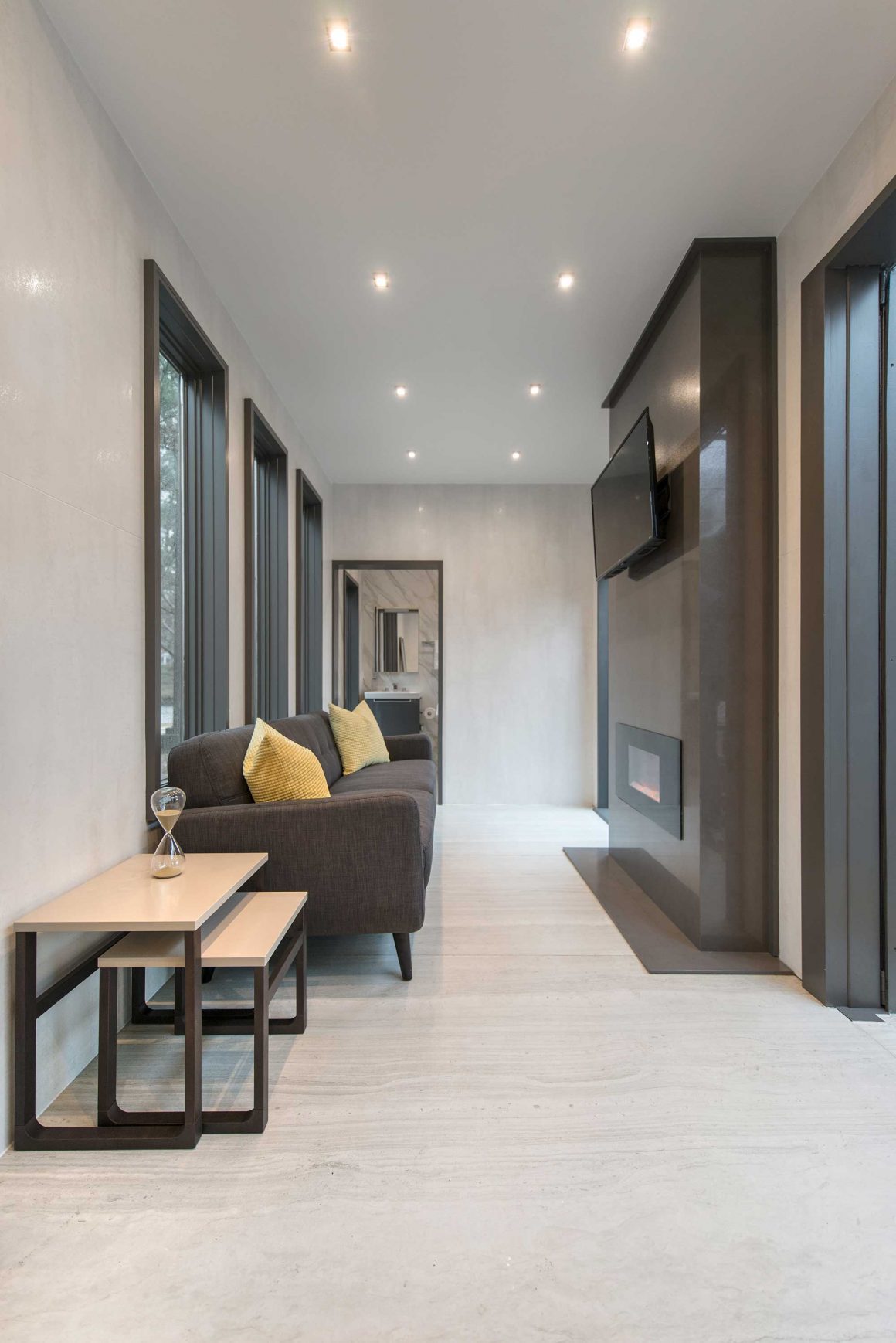
BOLD AND BEAUTIFUL
There is concern that living in a small space means losing the opportunity to be creative with its design. However, with the right surfacing material, homeowners can decorate their habitats without having a cluttered look.
In the Neolith Tiny House, a range of colours and finishes were used to display the versatility of the material and the ways in which it can make a powerful aesthetic statement. The exterior facades are clad in several choices, including the popular Calacatta Gold, which mimics ornate marble. The interior also features various colours, from minimalist white Iron Frost and natural Strata Argentum, to wood-like La Bohème, which gives a rustic yet chic twist to the space.

ENVIRONMENTALLY SOUND
A large part of the move towards small-space living comes from the desire to live more sustainably and protect the environment. Small homes are more efficient as they require fewer resources and use less energy, and Neolith is an ideal surfacing material because it’s 100 per cent recyclable and resin-free.
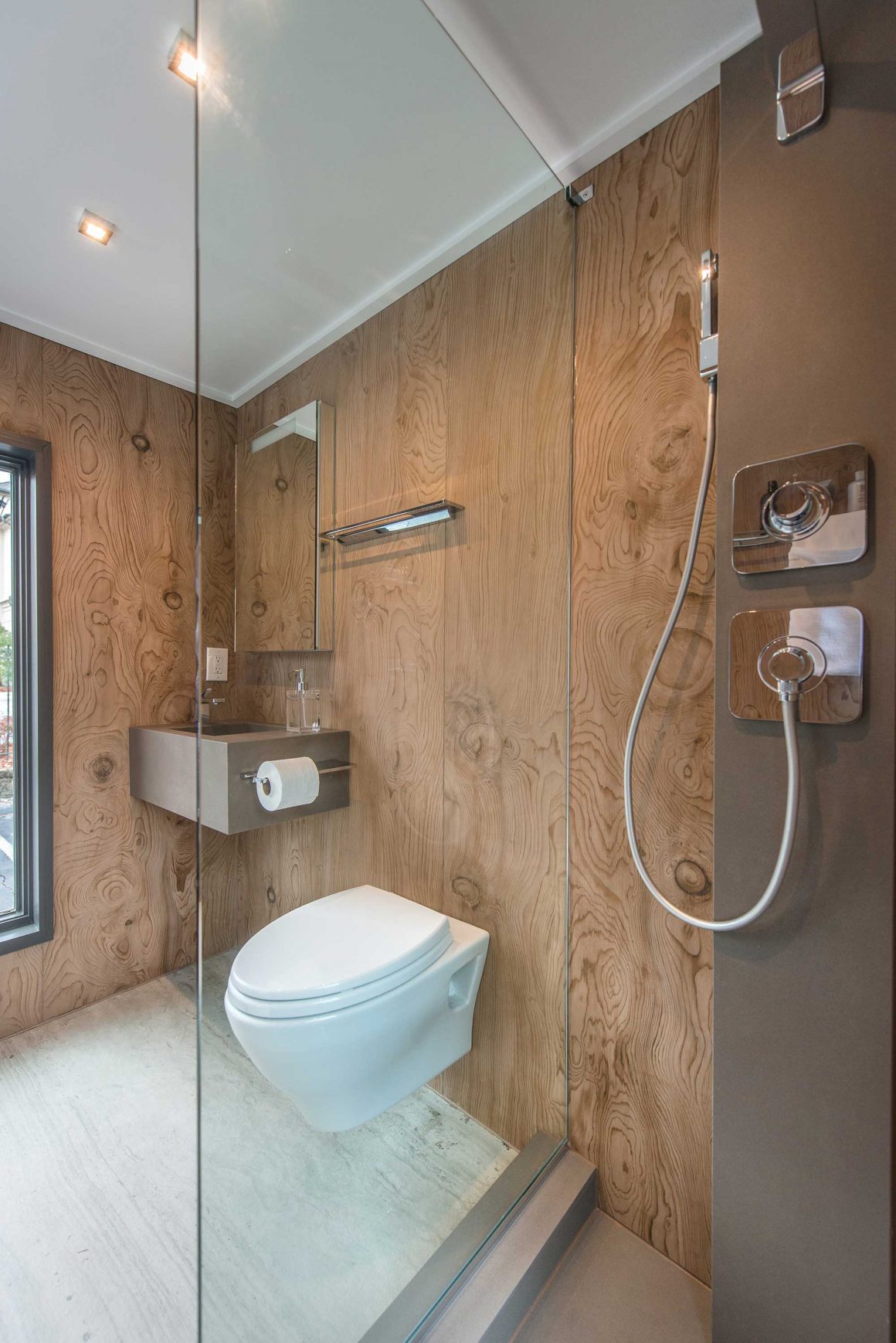
The exterior of tiny houses can also be coated in environmentally friendly solutions to reduce the effects of pollution and keep the facades fresh and clean.
The Neolith Tiny House is proof that a small home can last a long time, be beautiful and environmentally benign. •

